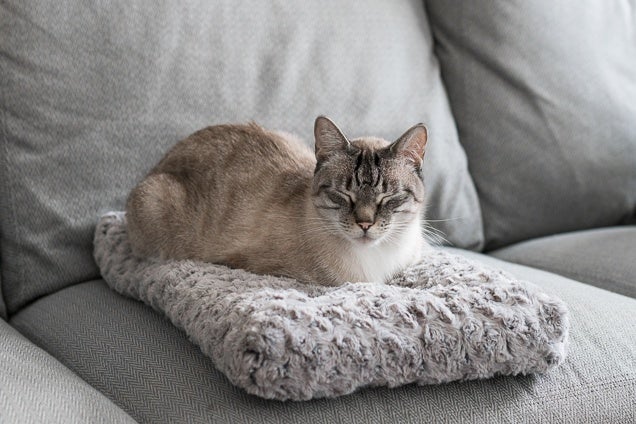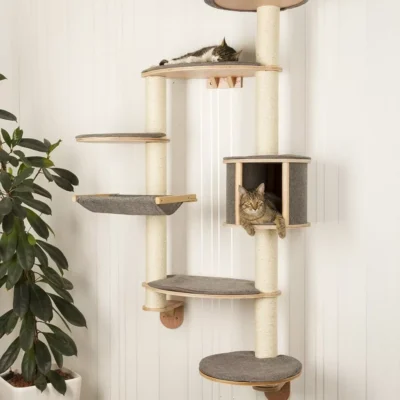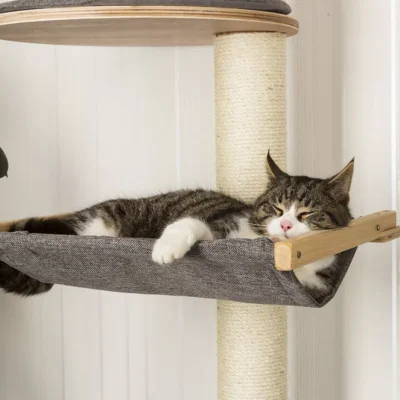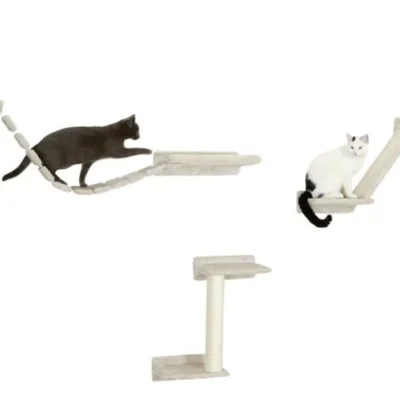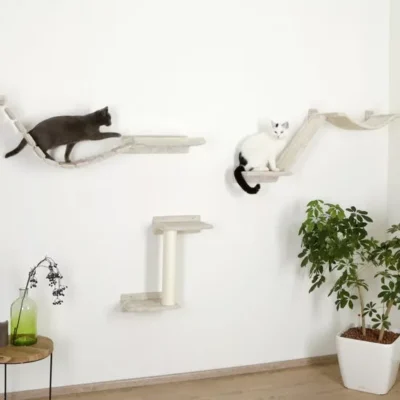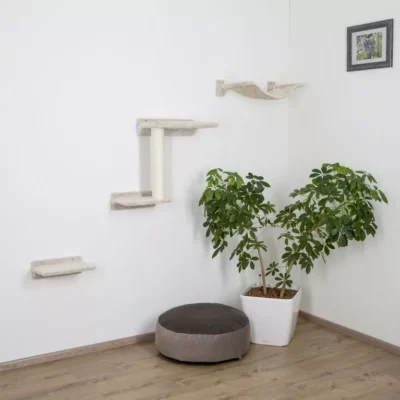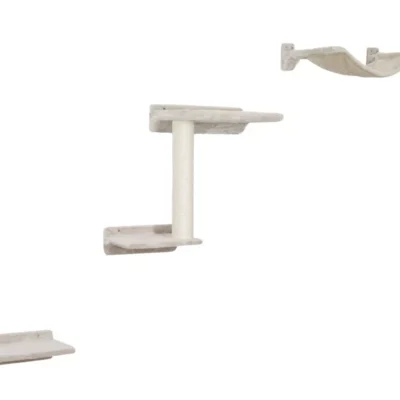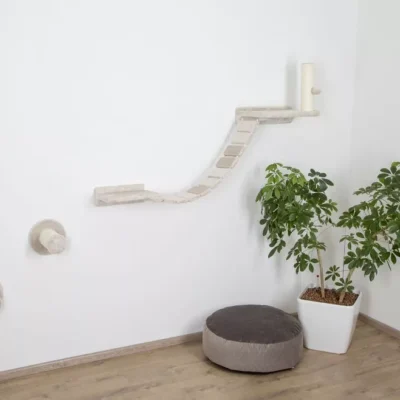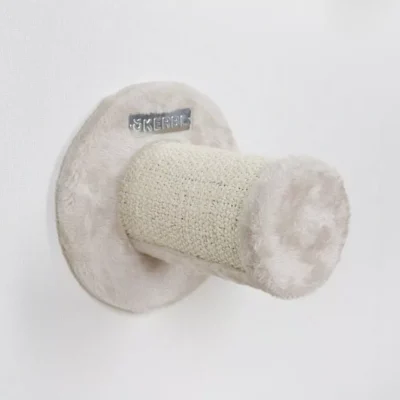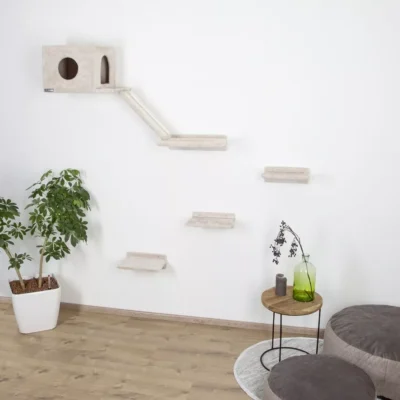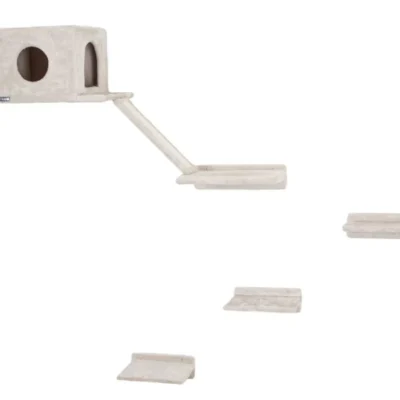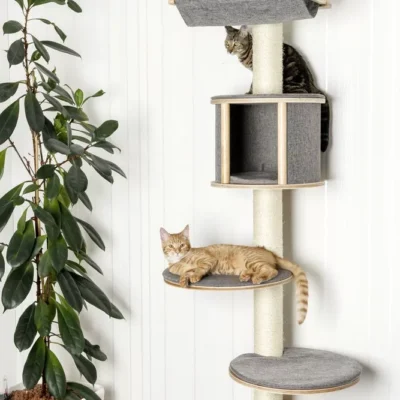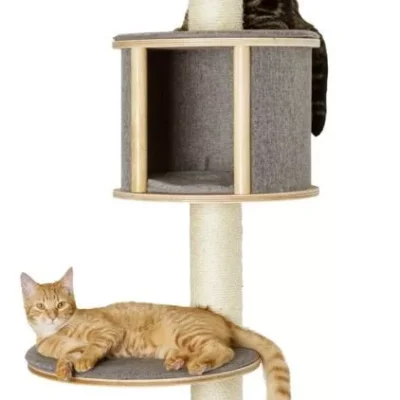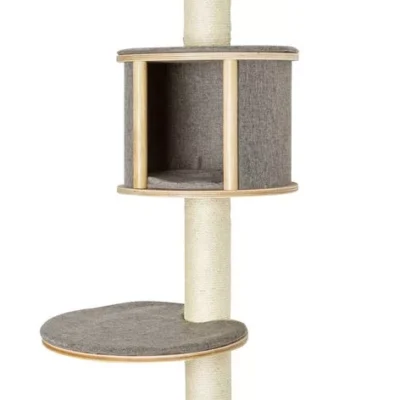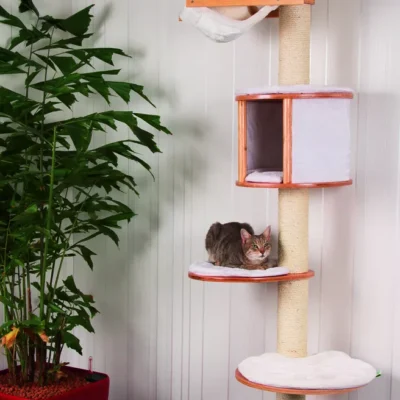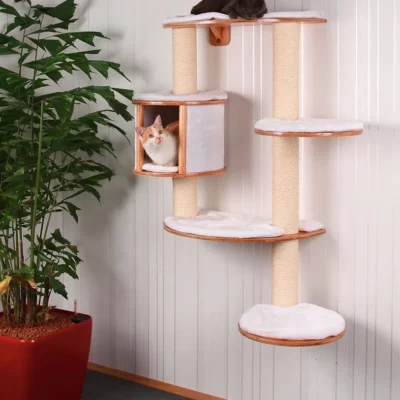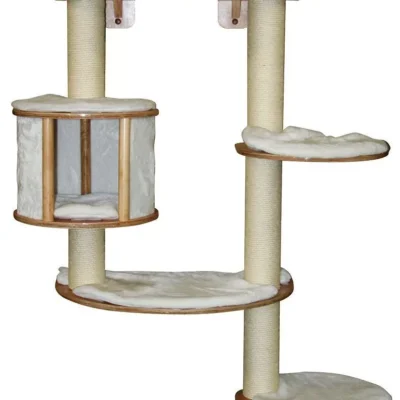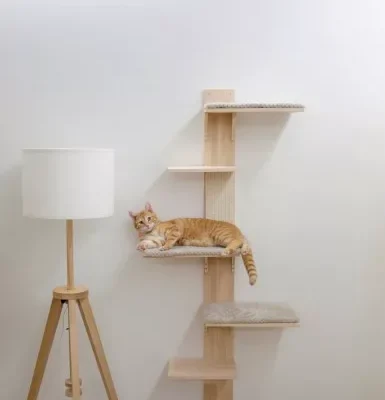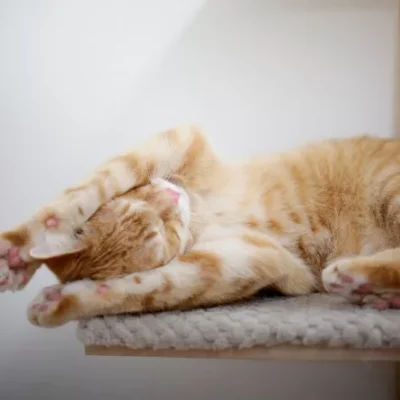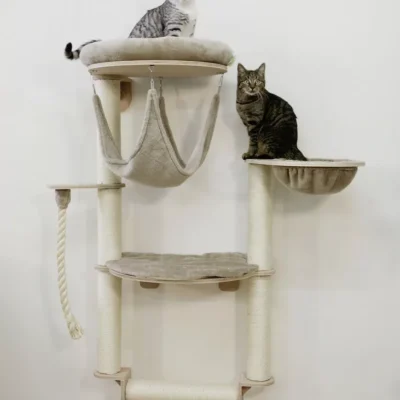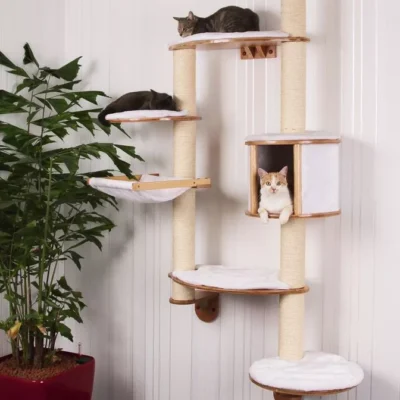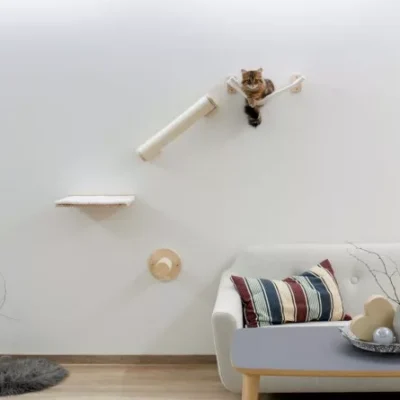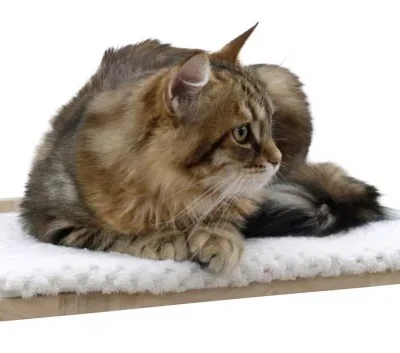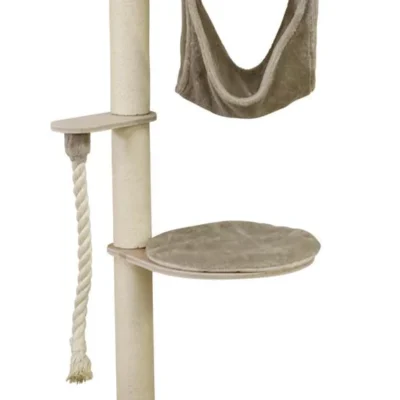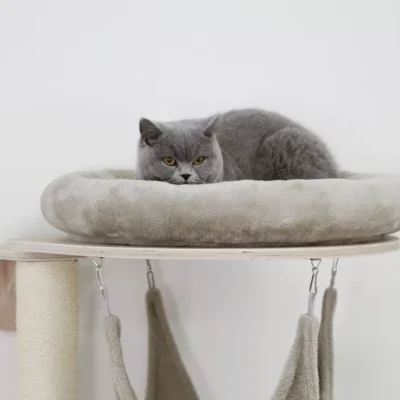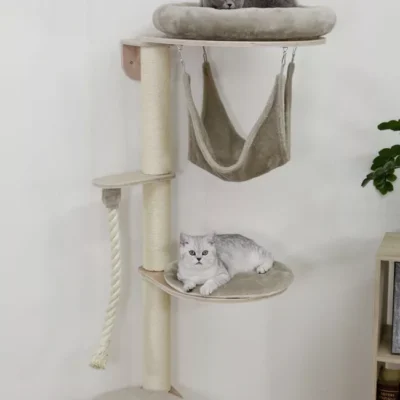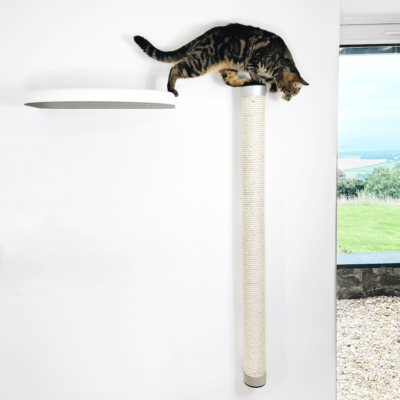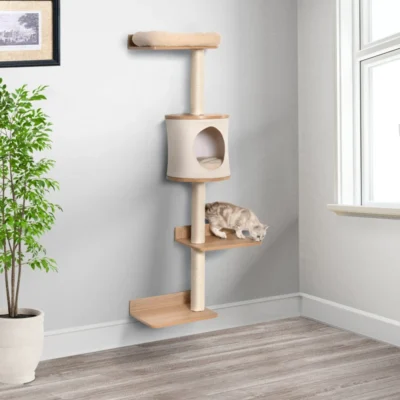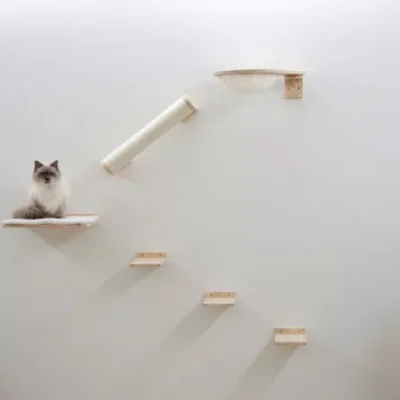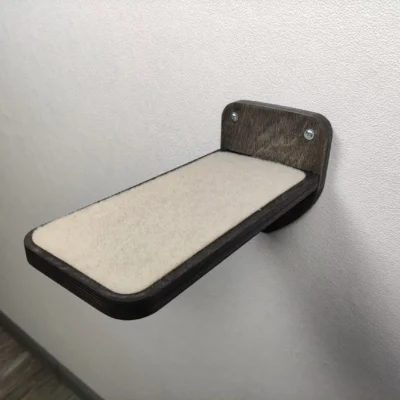0
Cats are renowned for their remarkable sleeping habits, spending a significant portion of their lives in slumber. To ensure their well-being, it’s important to grasp their distinctive sleep patterns and requirements.
Cats are crepuscular creatures, meaning they are most active during dawn and dusk, resulting in sleep during the day and night. On average, cats snooze for approximately 12-16 hours each day, with some individuals dozing for as long as 20 hours. This extensive sleep is crucial for their physical and mental health, enabling them to conserve energy and rejuvenate.
Cats possess a unique ability to swiftly switch between light and deep sleep phases. They frequently experience brief episodes of REM (rapid eye movement) sleep, during which they may twitch, purr, or emit soft sounds. These REM phases are linked to dreaming and play a pivotal role in their mental stimulation.
Comfort is paramount to cats when selecting their sleeping spots. They seek out comfort, security, and warmth, making a snug and secure sleeping area indispensable:
Safety: Cats naturally exercise caution and prefer sleeping in spots where they feel protected from potential threats.
Warmth: Cats relish warmth, often gravitating towards sunny spots or cozy blankets for their slumbers. Providing a warm and comfy sleeping environment ensures they enjoy the rest they require.
Stress Reduction: A secure and comfortable sleeping space can help alleviate stress and anxiety in cats. It serves as their sanctuary for relaxation and recharging.
Observing your cat’s sleeping preferences entails close attention:
Preferred Locations: Take note of where your cat chooses to rest. Do they favor a particular piece of furniture, a spot near a window, or a quiet corner? Cats frequently have favored locations they return to.
Sleeping Positions: Observe your cat’s sleeping positions, whether they curl up in a ball, stretch out, or tuck their paws beneath them. These positions can offer insights into their comfort levels.
Environmental Factors: Consider environmental elements that might influence your cat’s sleep, such as temperature, lighting, and noise levels. Adjusting these factors can help create an optimal sleeping environment.
In conclusion, comprehending your cat’s sleep patterns, preferences, and needs is vital for their overall well-being. Cats exhibit distinct sleep habits that play a critical role in their physical and mental health. By providing a cozy and secure sleeping spot that aligns with their preferences, you can ensure your feline companion enjoys restorative and peaceful sleep, contributing to their overall happiness and health.
Choosing the Perfect Bed for Your Cat
When it comes to selecting the perfect cat bed for your cat, there are various types to choose from, each catering to different preferences and needs.
Igloo Beds: Igloo-style beds are enclosed with a small entrance, providing cats with a cozy, den-like feel. These beds offer privacy and warmth, making them ideal for cats that like to hide or burrow.
Flat Beds: Flat beds come in various shapes and sizes, from simple mats to plush cushions. They are versatile and can be placed on the floor, elevated surfaces, or inside crates. Cats that enjoy stretching out often prefer flat beds.
Hammock Beds: Hammock-style beds are suspended and offer a unique lounging experience. Cats enjoy the gentle sway, and it keeps them off the ground, which can be particularly appealing to some cats.
Heated Beds: Heated cat beds are designed to provide additional warmth, making them ideal for older cats or those living in colder climates. They mimic the warmth of a cat’s favorite sunny spot.
Window Perch Beds: These beds attach to windows, allowing your cat to bask in the sunlight and watch outdoor activity. Cats often enjoy the view and the warmth of the sun.
The materials and features of a cat bed play a significant role in its comfort. Look for beds made from soft, plush materials like fleece, microfiber, or faux fur. Cats love snuggling into these materials. Beds with removable and washable covers are convenient for keeping the bed clean and fresh. The level of padding can vary, so consider your cat’s preferences. Ensure the bed has a non-slip bottom to prevent it from moving around when your cat gets in and out. For older cats or cats with joint issues, orthopedic beds with memory foam or similar materials can provide extra support and comfort.
Selecting the right-sized bed is crucial for your cat’s comfort. Measure your cat from nose to tail when they are stretched out to determine the ideal bed length. Ensure the bed is long enough for your cat to stretch comfortably. Consider your cat’s breed, as different breeds have varying sizes. Larger breeds like Maine Coons may need bigger beds, while smaller breeds can do with a more compact bed. Cats often prefer beds that allow them to curl up, so ensure the bed provides enough space for your cat to assume their favorite sleeping position.
In conclusion, choosing the perfect bed for your cat involves considering their preferences, the type of bed that suits them best, the materials and comfort features, and the right size. Providing a comfortable and inviting bed tailored to your cat’s needs will ensure they have a cozy and restful place to call their own, contributing to their overall happiness and well-being.
Introducing the New Bed to Your Cat
Introducing a new bed to your cat should be a gradual process, marked by patience and sensitivity to your cat’s preferences. Cats can be quite selective when it comes to their sleeping spots, so ensuring that the new bed is comfortable and appealing is crucial. Here’s how to make the transition to the new bed as smooth as possible.
Start by placing the new bed in a location where your cat already enjoys resting. Cats are creatures of habit, and a familiar spot can help them feel more comfortable with the new addition. This initial placement sets the stage for a positive association with the bed.
Encourage your cat to explore the new bed by placing treats or their favorite toys nearby. Allow them to approach the bed at their own pace, and when they show interest, offer treats or praise. Positive reinforcement like this helps your cat associate the bed with pleasant experiences.
Scent plays a significant role in a cat’s comfort and recognition. To make the new bed more inviting, collect your cat’s scent by rubbing a soft cloth or your hands on them and then transfer that scent onto the bed. This familiar scent will make the bed feel like a safe and comforting place.
Attract your cat’s attention to the new bed by placing their favorite toys on or near it. This can spark their curiosity and make the bed seem like an exciting place to explore.
If your cat has a beloved blanket or bedding, consider placing it on the new bed. The familiar scent of their favorite items will reassure them and make the new bed feel more like their own.
You can enhance the bed’s appeal further by sprinkling a small amount of catnip on it or using a feline pheromone diffuser like Feliway in the room. These additions can create a calming atmosphere that makes the bed more inviting and soothing.
Periodically swap the new bed with your cat’s current resting spot. This allows your cat to become accustomed to the scent of the new bed over time, making it feel more familiar and comforting.
When your cat shows interest in or approaches the new bed, offer treats or words of encouragement. Rewarding them for being near the bed reinforces the idea that it’s a pleasant and rewarding place to be.
During meal times, consider placing your cat’s food bowl close to the bed. Associating the bed with positive experiences like eating can make it more appealing.
Lastly, spend quality time with your cat on the new bed. Petting, cuddling, and engaging in interactive play sessions while they are on the bed can create positive associations with the sleeping spot.
Patience is essential throughout this process, as every cat is unique and may take varying amounts of time to adjust to a new bed. Avoid forcing your cat into the bed, as this can create negative associations. Allow them to explore and accept the bed in their own time, and gradually, they should come to see it as a cozy and inviting place for rest and relaxation.
Training Your Cat to Use the Bed
Training your cat to use a new bed can be a rewarding endeavor, but it requires patience, persistence, and a gradual approach. Cats are creatures of habit and may initially resist change, so it’s essential to approach this process with care and understanding.
Be Patient with the Adjustment Period: Cats are known for their routines, and introducing a new bed can disrupt their established habits. It’s natural for your cat to take some time to get used to the idea of a new sleeping spot. During this adjustment period, remain patient and avoid rushing the process.
Emphasize Positive Reinforcement: Positive reinforcement is a powerful tool in training your cat to use the bed. Whenever your cat voluntarily approaches or spends time on the bed, offer treats and praise. By associating the bed with positive experiences, your cat will be more inclined to use it.
Cater to Your Cat’s Preferences: Every cat is unique, and their preferences may vary. To encourage bed usage, consider the following strategies:
Toys and Play: Place your cat’s favorite toys in and around the bed to create an enticing play area. Engaging your cat in play near the bed can pique their interest.
Treats and Rewards: Reward your cat with treats or affectionate praise when they choose to rest on the bed. This positive feedback reinforces the idea that the bed is a comfortable and enjoyable place.
Feeding on the Bed: Initially, position your cat’s food bowl on or near the bed. Over time, gradually move it farther away from the bed to encourage them to spend more time there.
Utilize Cat-Friendly Scents: Cats rely heavily on their sense of smell. Make the bed more inviting by transferring familiar scents:
Transfer Familiar Scents: If your cat has a favorite blanket or bedding, place it on the new bed. The familiar scent will provide comfort and reassurance.
Catnip or Pheromones: Use a small amount of catnip on the bed or consider using a feline pheromone diffuser like Feliway to create a calming environment.
Address Unwanted Behavior with Care: If your cat shows reluctance or resistance to using the bed, it’s essential to address this behavior thoughtfully:
Avoid Punishment: Never punish your cat for not using the bed. Punishment can create negative associations with both the bed and you.
Gentle Encouragement: Gently guide your cat toward the bed with patience and positive reinforcement. Encourage them with soothing words and petting.
Limit Access to Unwanted Spots: If your cat continues to sleep in undesired locations, temporarily limit their access to those areas while encouraging the use of the bed.
Observe and Adjust: Pay close attention to your cat’s behavior and preferences. Take note of any specific reasons why your cat may not be using the bed. Is it in a noisy location, or does it receive too much light? Make adjustments accordingly to create an ideal sleeping environment.
Seek Professional Guidance if Needed: If your cat’s resistance persists or if they display unusual behavior, consider consulting a veterinarian or a professional pet behaviorist. They can provide expert advice and guidance tailored to your cat’s unique needs.
In conclusion, training your cat to use a new bed is a gradual process that requires patience, positive reinforcement, and understanding of your cat’s preferences. By creating a comfortable and inviting sleeping space and using gentle encouragement, your cat should eventually come to see the bed as a cozy and preferred spot for rest and relaxation. Remember that each cat is an individual, so adapt these strategies to suit your cat’s personality and comfort levels.
Troubleshooting and Tips for Success
Addressing common challenges in getting your cat to use the bed requires patience and problem-solving. If your cat continues to ignore the bed, consider revisiting the scent familiarization and positive reinforcement techniques. Make the bed more appealing by placing their favorite toys or treats nearby. This can pique their interest and encourage exploration.
If your cat prefers other spots over the bed, gently redirect them to the bed using toys or treats. Gradually limit access to their preferred spots while encouraging bed use. This gradual transition can help them become accustomed to the new sleeping arrangement.
If your cat is restless at night, consider adjusting the bed’s location to a quieter area or using a white noise machine to create a soothing atmosphere. Cats can be sensitive to environmental factors, so ensuring a peaceful sleep environment is important.
Temperature can also play a role in your cat’s bed preference. Ensure the bed is in a comfortable temperature zone. Cats may avoid beds that are too hot or too cold, so finding the right spot in your home can make a difference.
To keep the bed clean and fresh, follow these tips:
Regular Washing: If the bed has a removable cover, wash it regularly following the manufacturer’s instructions. A clean bed is more inviting for your cat.
Vacuum Around the Bed: Keep the surrounding area clean by vacuuming to remove any loose fur or debris. Cats appreciate clean surroundings, and it can make the bed more appealing.
Rotate Bedding: If you have multiple bedding options, rotate them to prevent excessive wear and to keep the bed smelling fresh.
Use Cat-Friendly Detergents: When washing the bed, use cat-friendly detergents without strong scents. Harsh chemicals or strong fragrances may deter your cat from using the bed.
Replace Worn-Out Beds: Over time, cat beds may wear out. If the bed becomes lumpy or loses its shape, consider replacing it with a new one to maintain your cat’s comfort.
When your cat starts using the new bed regularly, it’s a reason to celebrate. Shower your cat with praise and affection when you see them using the bed. Positive reinforcement reinforces the behavior and makes them associate the bed with positive experiences.
Continue to offer treats and rewards when your cat chooses the bed for rest or sleep. This positive feedback encourages them to view the bed as a comfortable and desirable place.
Share their joy with others by capturing a photo of your cat in their bed and sharing it with friends or on social media. Celebrate your cat’s newfound love for their bed with fellow cat lovers.
As a reward for their successful transition to the bed, consider upgrading to a more luxurious or heated bed if feasible. Providing additional comfort can further enhance your cat’s enjoyment of their bed.
In conclusion, troubleshooting and tips for success in getting your cat to use the bed involve addressing common challenges, maintaining cleanliness, and celebrating your cat’s successful transition. Remember to be patient and persistent throughout the process, as cats have their own timelines for adjusting to change. With the right approach, your cat can come to love their bed as a comfortable and cherished resting place.
Conclusion: Sweet Dreams for You and Your Feline Companion
In the world of pet ownership, there are few things as heartwarming as seeing your feline friend snuggled up in their cozy bed, purring contentedly as they dream sweet kitty dreams. Training your cat to adore their new bed is not just about providing comfort; it’s about creating a safe haven where they can relax, recharge, and truly feel at home.
Throughout this guide, we’ve delved into the art of understanding your cat’s preferences, choosing the perfect bed, introducing it gradually, and patiently training your cat to use it. While it may take a bit of time and effort, the rewards are immeasurable.
Remember, every cat is unique, and their journey to bed adoration may have its ups and downs. Stay patient, stay positive, and celebrate even the smallest victories. Your cat will thank you with their trust, their comfort, and the special moments you’ll share as they make their new bed a beloved part of their daily life.
So, here’s to many cozy nights, happy purrs, and sweet dreams for both you and your cherished feline companion. May your home be filled with the soothing sound of “The Cat’s Meow.”
Sweet dreams to you both!

